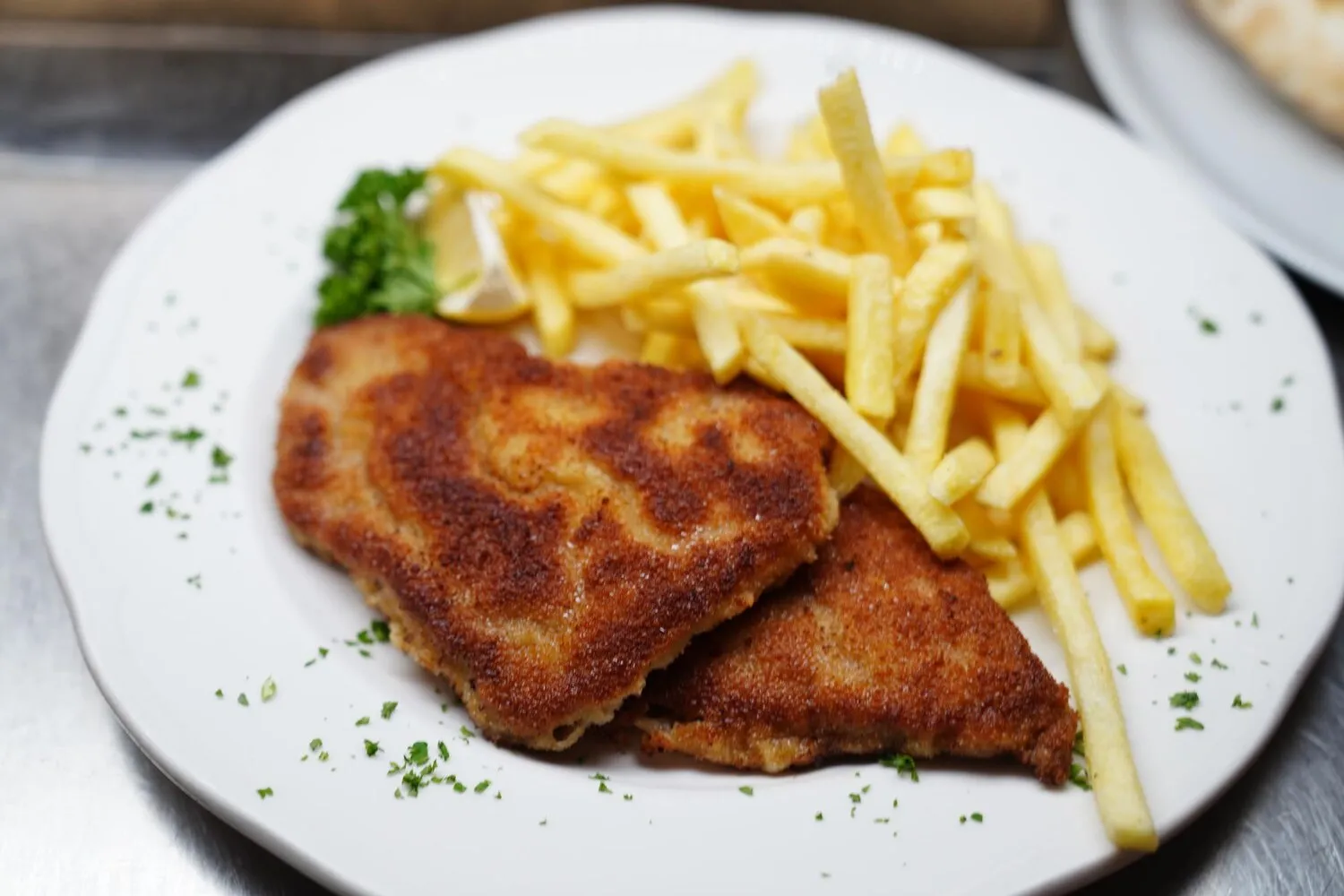
Schnitzel
Classic Schnitzel dish.
Nutrition Facts
* The % Daily Value (DV) tells you how much a nutrient in a serving of food contributes to a daily diet. 2,000 calories a day is used for general nutrition advice.
Schnitzel's origins are debated, with some believing it evolved from the Italian 'cotoletta alla milanese'. However, the Viennese version, Wiener Schnitzel, became a symbol of Austrian cuisine in the 19th century, solidifying its place in culinary history.
Schnitzel is deeply ingrained in Austrian culture, representing tradition, comfort food, and culinary excellence.
National Dish
Wiener Schnitzel is often considered one of Austria's national dishes, served in restaurants across the country and frequently prepared at home.
Restaurant Staple
It is a ubiquitous menu item in traditional Austrian restaurants ('Gasthäuser') and is often served with classic sides like potatoes and cranberries.
Family Tradition
The preparation of Schnitzel is often a family affair, passed down through generations, with each family having their own subtle variations on the recipe.
Schnitzel is characterized by its savory, crispy, and slightly buttery flavor, balanced by the subtle taste of the meat itself.
The flavor profile depends heavily on the quality of the veal (for Wiener Schnitzel), the freshness of the breadcrumbs, and the purity of the butter or oil used for frying. A squeeze of lemon adds a bright, acidic counterpoint to the richness of the dish.
Pounding the Meat
Pound the veal cutlets evenly thin, about ¼ inch thick. This ensures even cooking and a tender result.
Dredging Sequence
The traditional dredging sequence is flour, egg, and then breadcrumbs. Make sure each cutlet is thoroughly coated at each stage.
Breadcrumbs
Use finely ground breadcrumbs (traditionally 'Semmelbrösel'). Avoid using panko breadcrumbs, as they will give a different texture. Stale bread processed into crumbs works best.
Frying Technique
Use plenty of clarified butter or a neutral oil (like canola or sunflower oil) for frying. The Schnitzel should 'swim' in the fat. Maintain a consistent temperature to ensure even browning and avoid burning. Do not overcrowd the pan.
Serving Immediately
Serve the Schnitzel immediately after frying for optimal crispness. A wedge of lemon is essential for brightening the flavors.
Explore additional Austrian dishes and restaurants
Explore AustrianDiscover top dining spots and culinary experiences in Graz.
Explore GrazLearn more about the food culture, restaurant scene, and culinary heritage of Austria.
Explore Austria